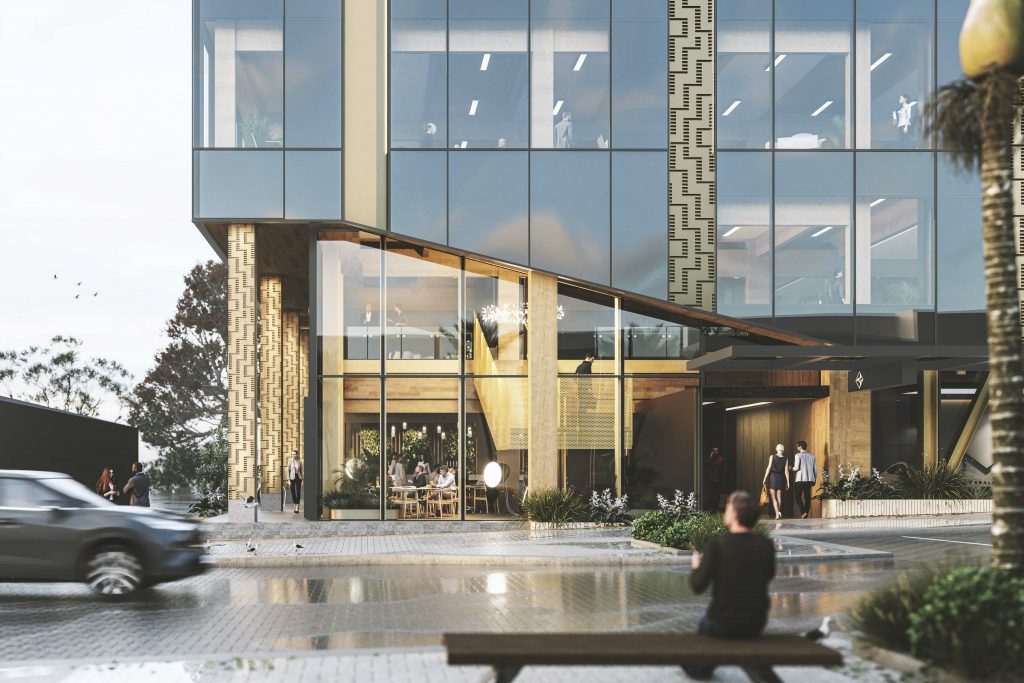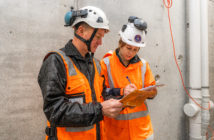Warren and Mahoney (WAM) says it will reduce the embodied carbon emissions of its building designs by a minimum of 40 per cent by 2030 thanks to ‘machine-learning’

Using Autodesk’s cloud-based design and project management capabilities optimises building design and drives advanced machine learning and metaverse projects.
Autodesk Platform Services enables WAM to access material data from its building design portfolio at scale and at speed. Access to this data means it can make fast and easy material design decisions that will have less effect on the climate.
WAM has neutralised its carbon operations every year for 15 years, and its ambition is to continue to maximise its positive environmental impact through low-carbon design of its 300 active projects. In 2020, WAM’s annual business emissions was approximately 700 tons.
“We’ve found that when we can achieve a 700 ton reduction on one project, it is the equivalent to operating as net-zero emissions as a company for approximately one year. When we consider the number of active projects it’s clear where our focus as an industry needs to be,” said Fiona Short, Principal at WAM.
To deliver this impact, WAM deployed Autodesk’s design, modelling and information management solutions, including Autodesk Construction Cloud, to support data-informed design and collaboration between 400 employees and 264 consultants and contractors from anywhere and across the full building process. This includes intensive 3D rendering, remote and mobile project management, and maintaining quality, safety and commissioning processes in the field.
“WAM has built an advanced way of working between technology, processes and people to create low-carbon solutions for an industry often criticised for ‘bricks and mortar’ thinking,” said Brad Sara, Digital Design Leader at WAM. “We initially teamed with Autodesk nine years ago, recognising the opportunity to rebuild Christchurch after the major earthquakes with resilient structure as well as resilient ways of working. Since then, the relationship has dramatically expanded with the goal of working together to have a larger impact on the built environment for all projects in New Zealand, Australia and beyond.”
The company uses Autodesk Revit to leverage building information modelling (BIM) software for all architectural design, enabling its team to develop high-quality and data-rich building models with climate impact at the forefront.
In one example, WAM saw a 60 per cent improvement on an eight story office tower, 90 Devonport Road, when compared to typical construction. The saving on emissions was 5,000 ton which is the equivalent of taking 1,087 cars off the road for a year.
“Autodesk allows us to scale our impact and ability to research and innovate by powering a centralised database that holds 400 of our projects making data accessible at any time,” said Fiona Short, Principal at WAM. “This has ultimately inspired new ways of thinking about the impact of every project, and led us to define transformative standards for carbon data management, measurement and ultimately what ‘good’ looks like for all of our projects, specific to their location in the world”.
“The World Business Council for Sustainable Development reports 38 per cent of all global greenhouse gas emissions come from the built environment. There is a tremendous opportunity to increase cross-industry collaboration and digital transformation to drastically reduce this impact,” said Andy Cunningham, Senior Regional Director A/NZ at Autodesk.
“Teaming with Autodesk, WAM can look into rich data sets to mine for carbon attributes, build out typology for buildings, understand carbon footprint and carbon cost per square metre, and apply those insights to achieve its climate commitments.”
“Game-changing” machine learning
Working with Autodesk has helped WAM power advanced technology projects to transform the building industry from the ground up.
Using Autodesk, and the accessibility to data and collaboration it enables, along with the Microsoft Azure team, WAM has built a prototype ‘game-changing machine learning engine’, according to Sara, through which it can lean into artificial intelligence (AI), giving its design team ‘superpowers’. Instead of manually pairing quantitative BIM material data with material carbon intensity data, a project’s data can be automatically mined and calculated, producing a high probability carbon estimate in moments.
Using AI in this way will be a game changer and will enable WAM’s designers to simply ‘look’ at a project or whole portfolio through this lens. Designers can then take this into consideration while balancing all other aspects of a complex project brief. WAM sees this as a major breakthrough on the way towards a zero carbon future.
Stepping into the metaverse
Autodesk’s expanded partnership with Epic Games has enabled WAM to take architecture and design into a new frontier, and take a step into the metaverse.
“It’s one thing to imagine a project, and it’s another to turn that into 3D form and then take that rendering and make it a photo-realistic experience. But it’s a completely different level to step inside that building in the digital realm, and see it as if you’re there before it’s built. Autodesk and Epic Games provide the digital infrastructure to realise that ambition,” said Sara.
Sara said WAM is using these capabilities to better facilitate the design phase of a milestone project, Heke Rua Archives New Zealand. This building is designed to house and protect the nation’s greatest treasures for future generations. Being able to visualise the design and take people through the building virtually has helped facilitate both the co-design process with the local indigenous community but also coordinate a complex building which is very heavily serviced, designed to withstand a ‘one in 1,000-year event’. Autodesk is powering WAM to design a low-carbon, co-designed and resilient future.
Partnership and Innovation
“Over 80 per cent of NZ architects are in a practice smaller than 10 people. The role of larger practice should be to drive and share innovation made possible through leveraging the large amounts of data they have access to so the whole industry can advance together,” said Short.
WAM‘s latest collaborative innovation is all about increasing accessibility to carbon insights. In 2022, WAM partnered with the Autodesk Partner Development Team and One Click LCA to develop Revit integration with Autodesk Platform Services and Once Click LCA carbon foot-printing tools. This integration unlocks the potential for carbon assessment data to be fed back and accessed directly from Autodesk Platform Services.
“We want as many people as possible to have access to carbon data to maximise impact and this integration means the carbon data can be available to everyone from designers, consultants, contractors, and projects leads to clients,” said Short.
The initiative has led to discussions with industry specialists which are now building proof of concepts (POCs) using Autodesk to mine data and use it in real time to create insights about projects.








